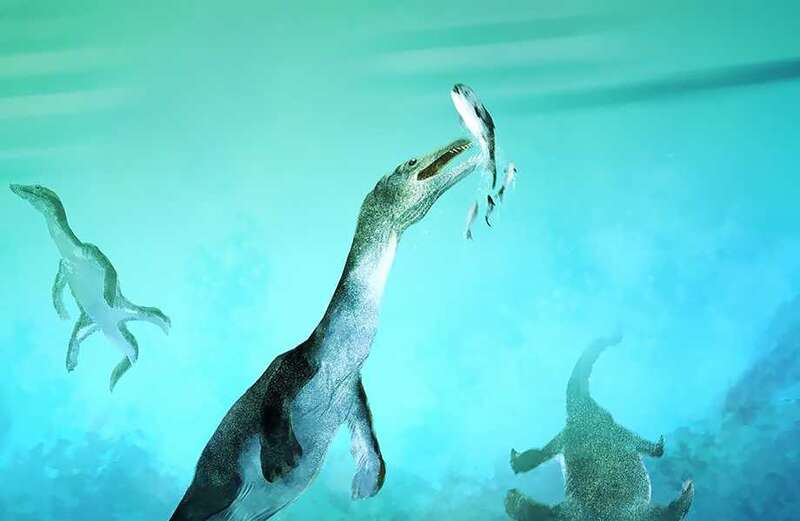THE REMAINS of an ancient sea-dwelling reptile have been declared the oldest of their kind in the Southern Hemisphere.
A paper published Monday in the journal Current Biology identified a nothosaur vertebra discovered nearly five decades ago as a record-breaking fossil.


At roughly 246 million years old, it predates the previously oldest-known fossils in the region by more than 40 million years.
Clues about the nothosaur's life were held in a weathered fragment of its spine. The beast's dorsal vertebra was excavated from a boulder in a stream bed on New Zealand's South Island.
Researchers determined that the polar sea giant may have grown up to seven meters, or 23 feet, long. It would have paddled through the water with paddle-like limbs as it hunted for squid and fish.
 London, New York and Europe welcome New Year; plus pics from around the world
London, New York and Europe welcome New Year; plus pics from around the world
Nothosaurs were characterized by flattened skulls and a mouthful of thin, cone-shaped teeth.
It was a promising find, but the fossil's significance only became clear once paleontologists from Sweden, Norway, New Zealand, Australia and East Timor banded together to conduct an analysis.
The scientists examined the vertebra and related fossils and realized the fragment belonged to one of the earliest-known marine reptiles.
"We show that these ancient sea reptiles lived in a shallow coastal environment teeming with marine creatures within what was then the southern polar circle," said Dr. Benjamin Kear, the paper's lead author.
POLAR PLUNGE
Nearly 250 million years ago, New Zealand was located on the southern polar coast of an enormous universal ocean called Panthalassa.
Sea-dwelling reptiles thrived at South Pole due to rising global temperatures.
When a mass extinction event decimated marine ecosystems, this gave way to the age of dinosaurs, known as the Mesozoic area.
The most diverse group of marine reptiles were the sauropterygians.
Despite boasting an evolutionary history over 180 million years long, scientists' knowledge was largely limited to the Northern Hemisphere before the study.
"Using a time-calibrated evolutionary model of sauropterygian global distributions, we show that nothosaurs originated near the equator, then rapidly spread both northwards and southwards at the same time as complex marine ecosystems became re-established after the cataclysmic mass extinction that marked the beginning of the Age of Dinosaurs," Kear said.
 Cruise passengers stranded on New Year 'trip from hell' after fungus outbreak
Cruise passengers stranded on New Year 'trip from hell' after fungus outbreak
The area where the fossil was found is known as New Zealand's Cantebury region. It is teeming with fossils due to an abundance of marine sedimentary rock formations.

Among the discoveries were the remains of ancient human-sized penguins in 2018.
An amateur paleontologist stumbled upon the bones of Crossvallia waiparensis, a giant bird from the Paleocene Epoch, between 66 and 56 million years ago.
Scientists believe there are more clues to uncover.
"Undoubtedly, there are more fossil remains of long-extinct sea monsters waiting to be discovered in New Zealand and elsewhere in the Southern Hemisphere," Kear said.
A Timeline of Life on Earth


































